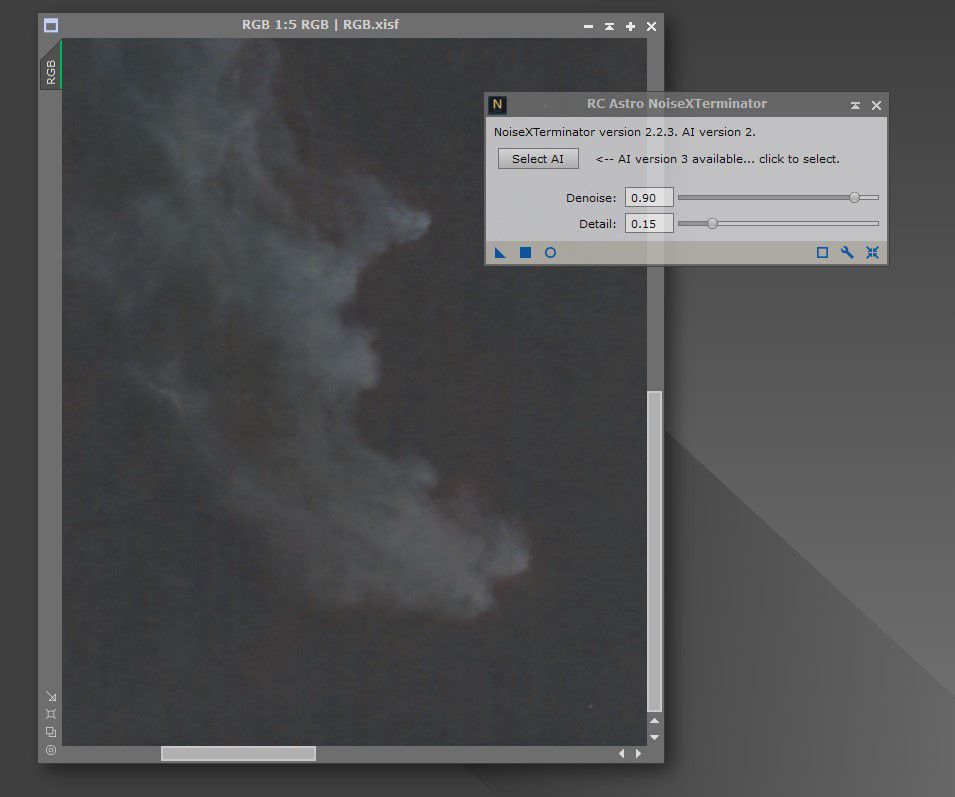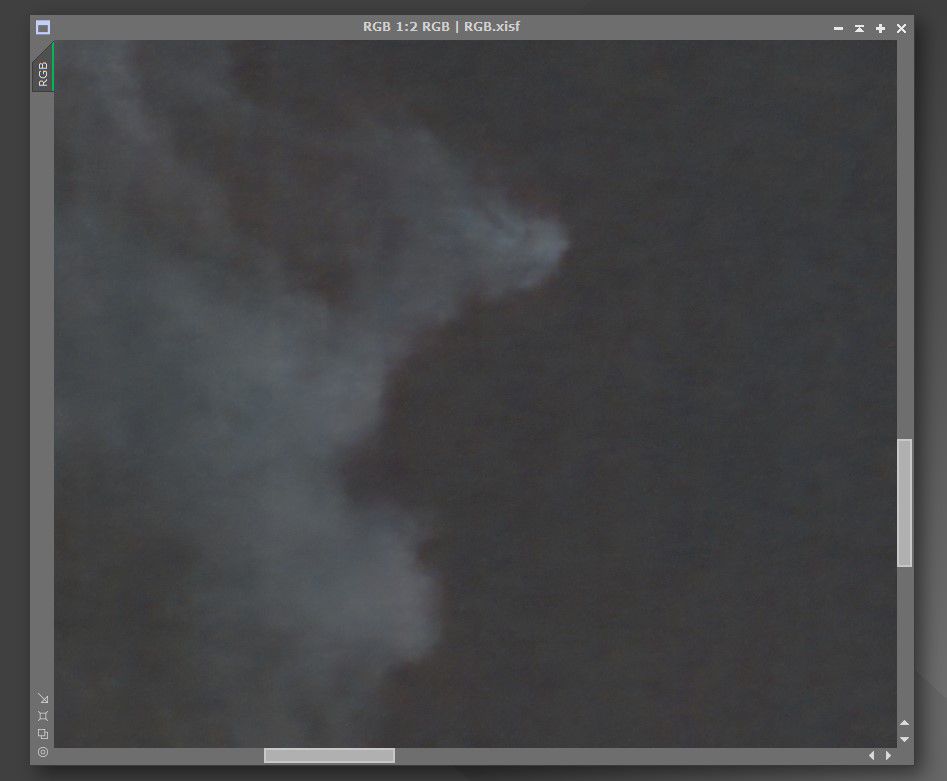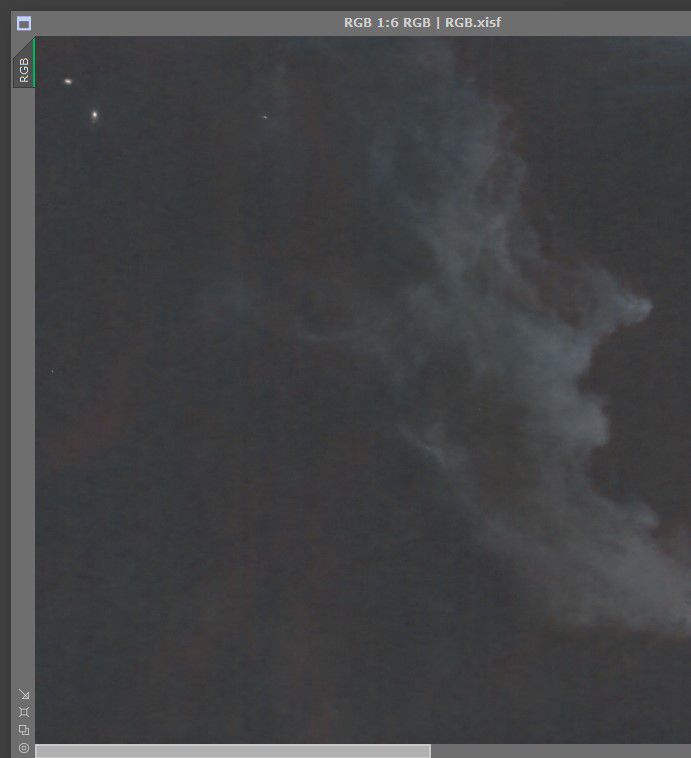


...
·

·
2
likes
|
|---|
|
...
·

·
1
like
|
|---|
Personally, I would never use a light pollution filter like the Antlia Triband RGB Ultra Filter in Bortle 2. RGB plus LUM with enough integration time you should work very well. Rob |
...
·
 |
|---|
Rob Kiefer: Thanks so much Rob, I'll follow your recommendations. CS! |
...
·
 |
|---|
Miguel T.: Thank you very much, Miguel. I will follow the detailed recommendations you've given me. CS! |
...
·

·
1
like
|
|---|
Looking at this image, and glancing at your gallery, I noticing you shoot 60 second subs…. and If i were to guess, you probably did that here as well. 60 seconds is not enough time to really soak up any signal. i know the 294 has some amp glow to deal with but I'd shoot for at least 3 minute subs, if not more. You have nothing limiting you other than amp glow in this scenario. Push those longer subs, gather more signal faster. Also just to echo previous comments, but you need nothing more than a UV/IR filter in dark skies such as yours. Bortle 2 is a dream for most. Filtering is doing nothing productive for you on broadband signals. |
...
·
 |
|---|
Brian Puhl: Thanks, Brian! I appreciate your feedback. Lately, I've been shooting at 60 seconds for RGB because one of my problems is that I can't get acceptable blue stars. I've noticed some improvement with that time, but as Miguel points out, this particular object—IC2118—is too dim and requires much more time. Also, as I've been told, the additional use of the RGB filter hasn't helped. I used it at the suggestion of a colleague, but I see it wasn't a good idea. Thanks to your comments, I can rest easy, and I hope to get my RGB back next week, but with more hours and my 180-second frames. I have several hours of HA to integrate, so hopefully, I'll get good results. CS! |
...
·
 |
|---|
Enrique Ojeda:Brian Puhl: For what it's worth, changing your exposure time isn't going to change the stars. That's typically going to be an optical issue or a focus issue, ignoring guiding factors. Misshapen blue stars are typically a sign of chromatic abberation, but I've never really known the Redcats to exhibit poor optics. I would more than likely look into your focuser offsets, or maybe backlash. As of writing this I realized you are mono, and I'm going to presume you didn't stack filters did you? The Triband filter while imaging through another filter? That would definitely cause some poor stars and reflections. |